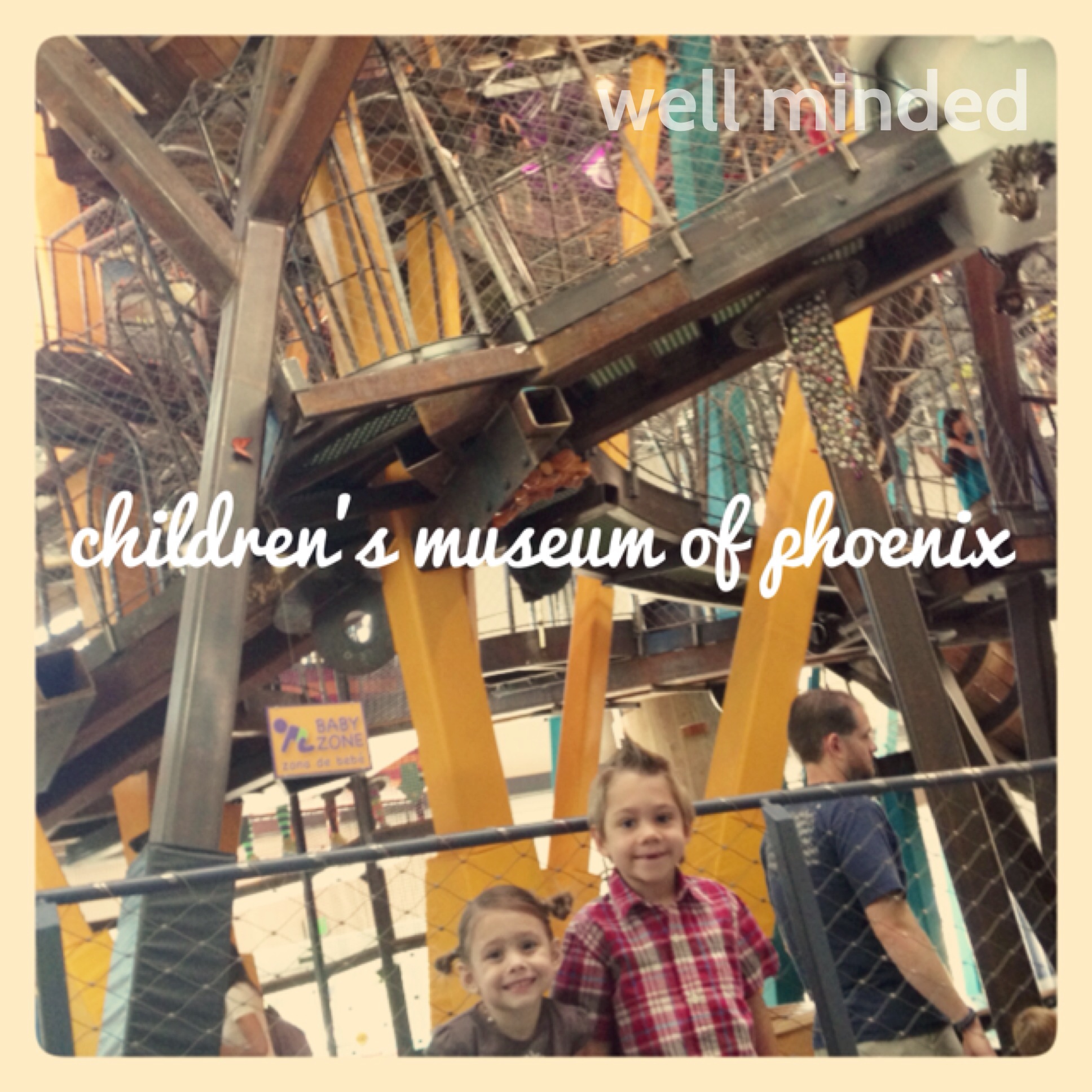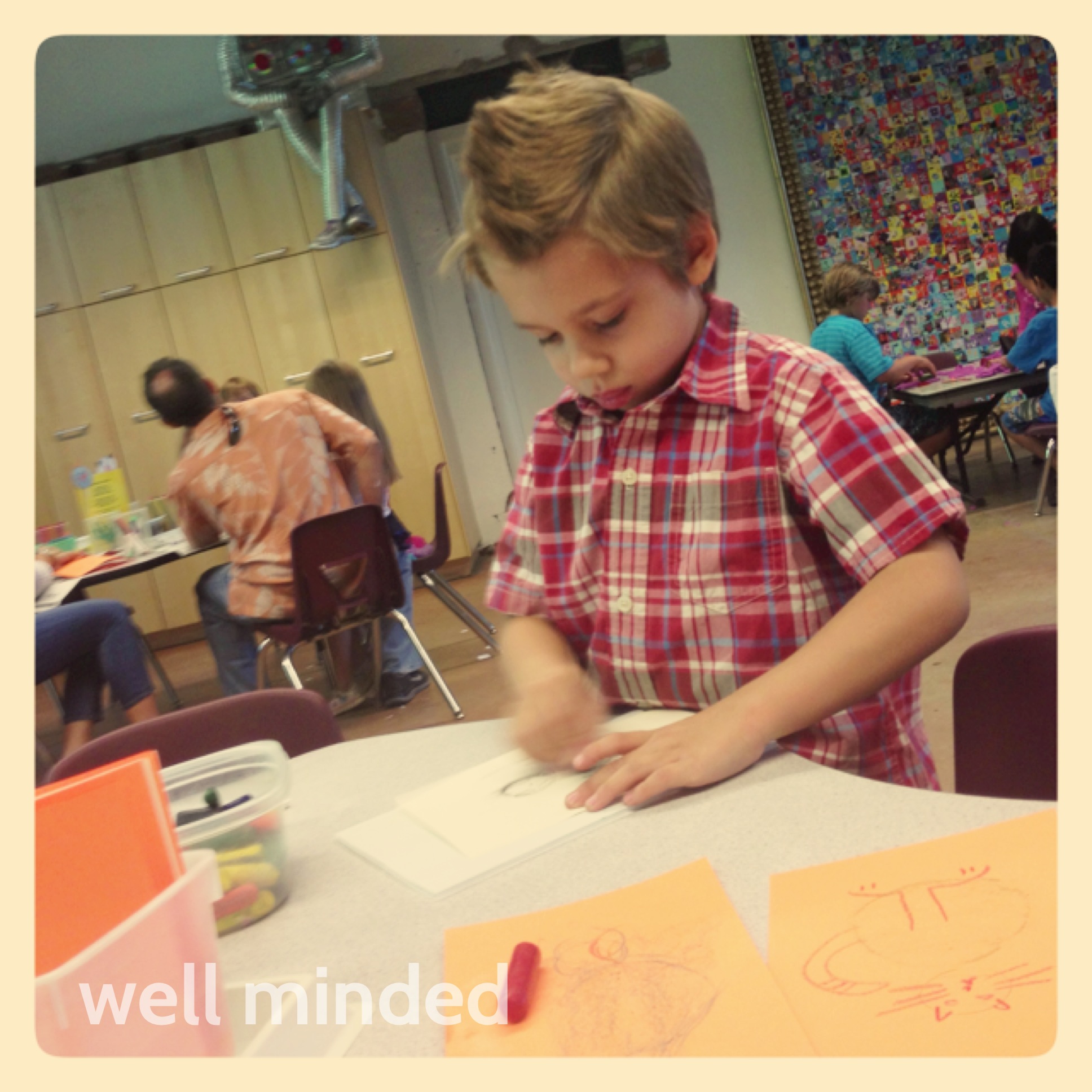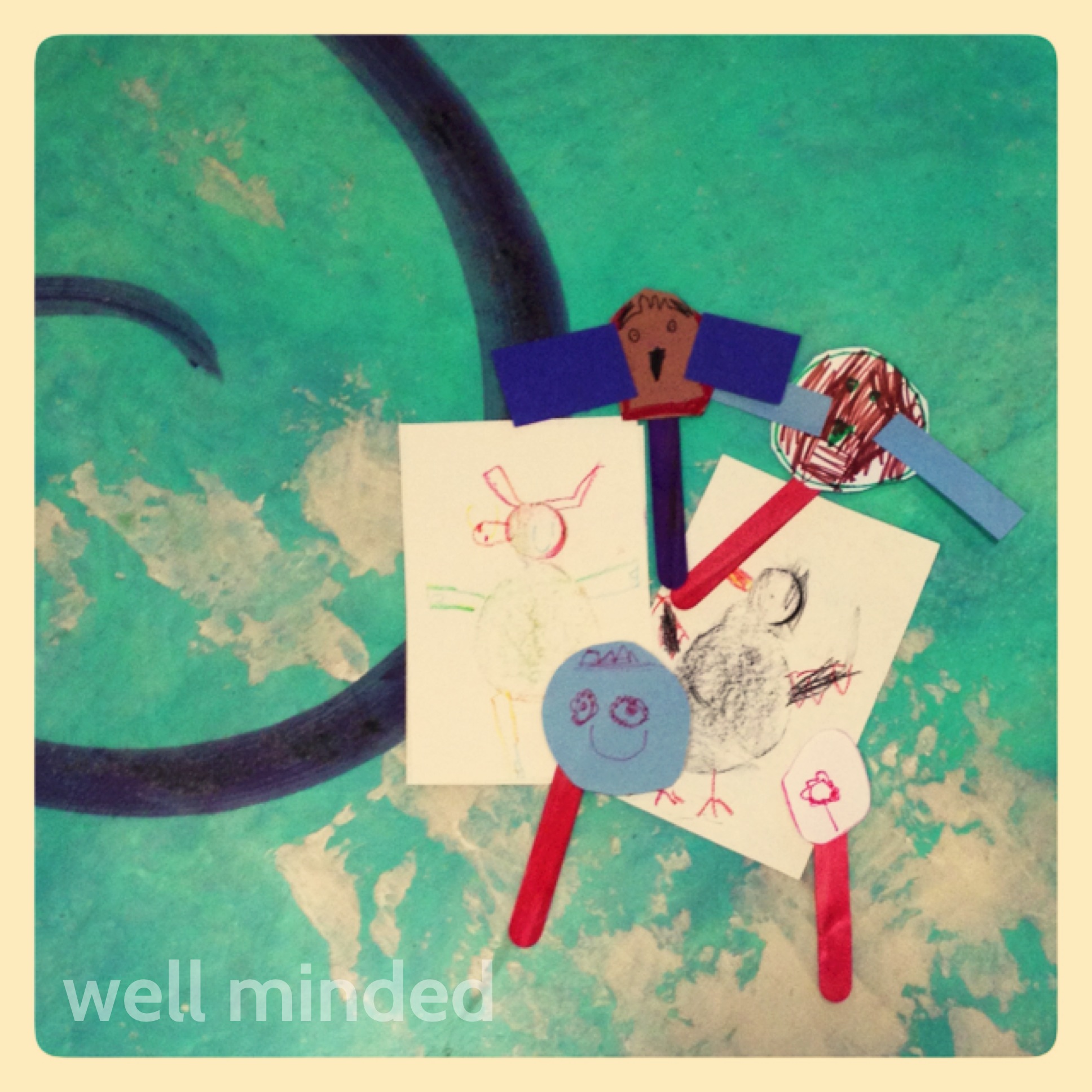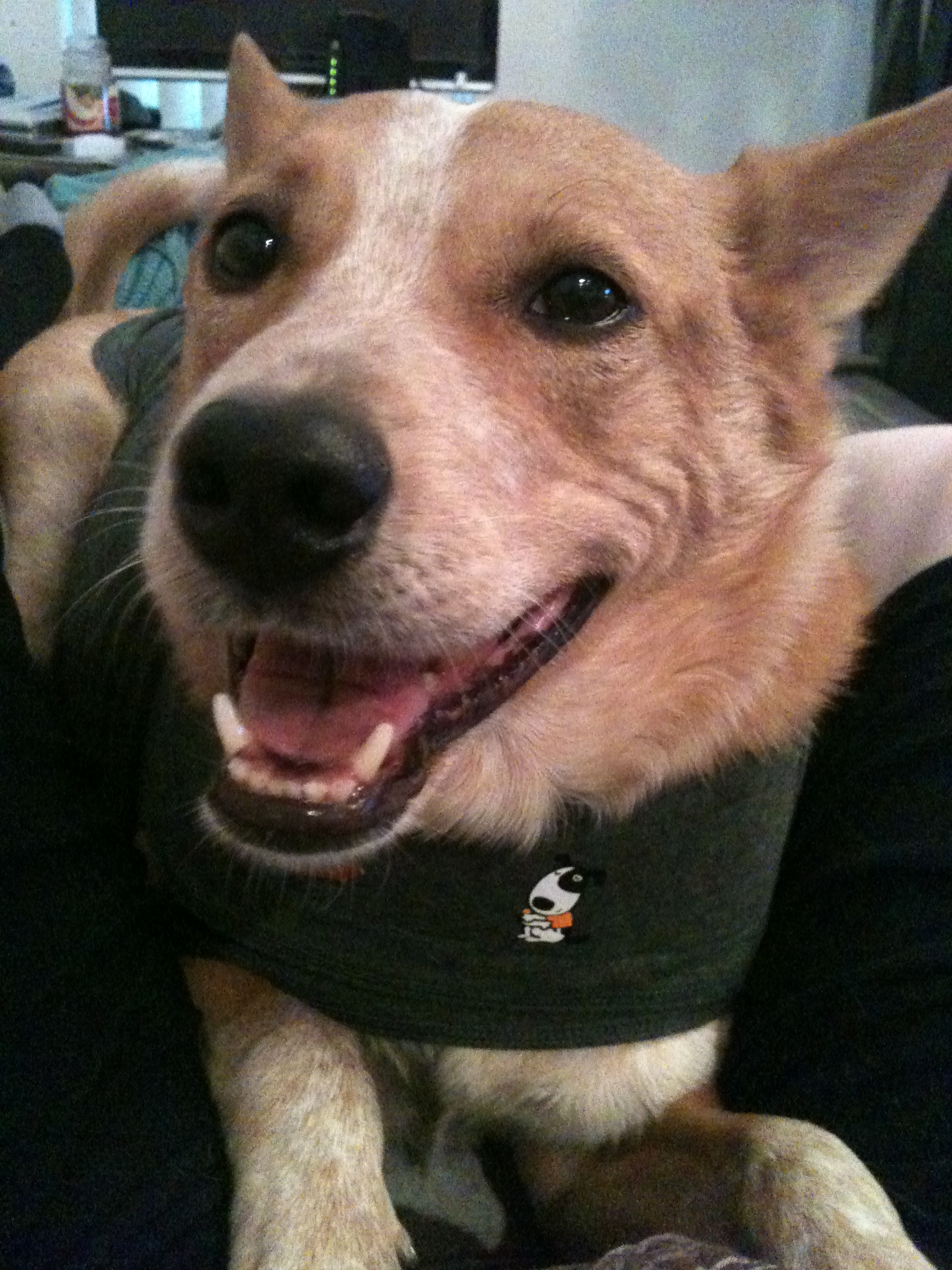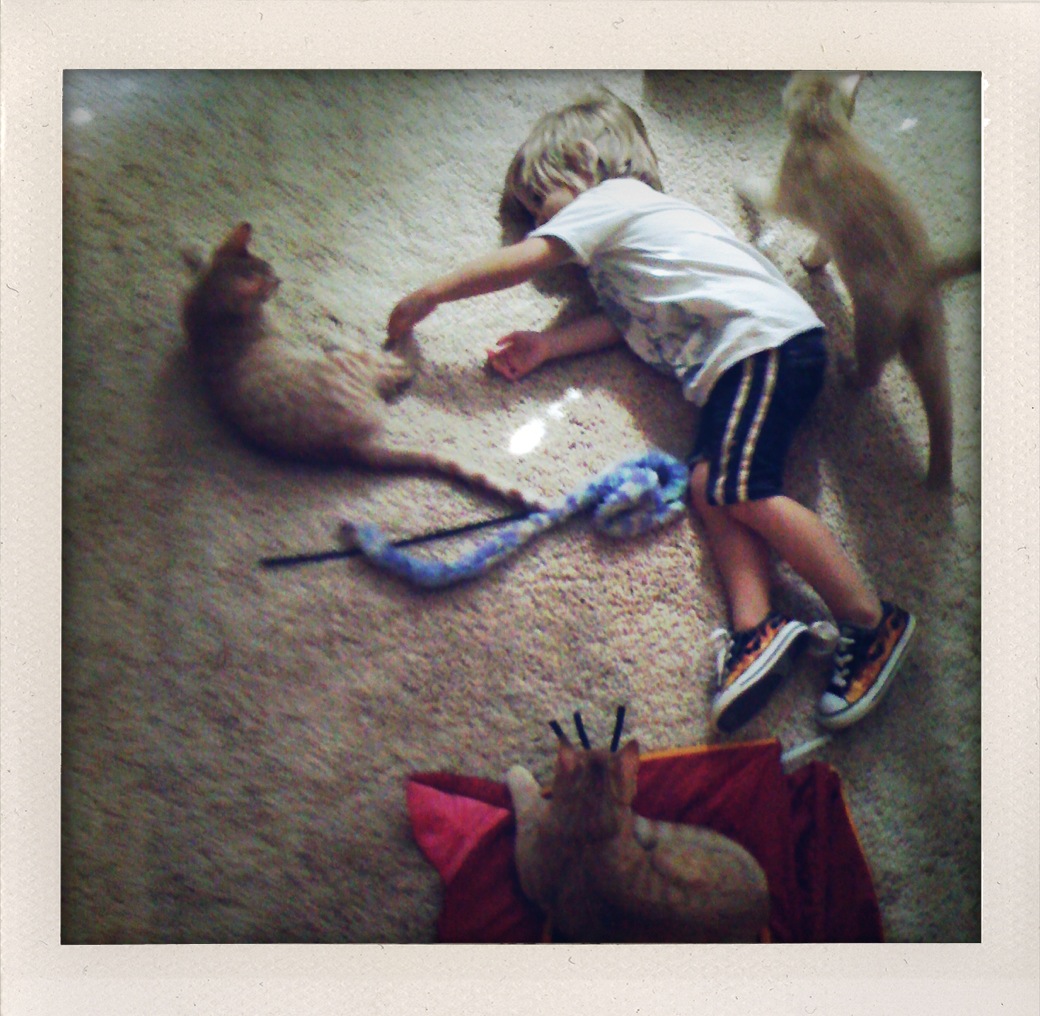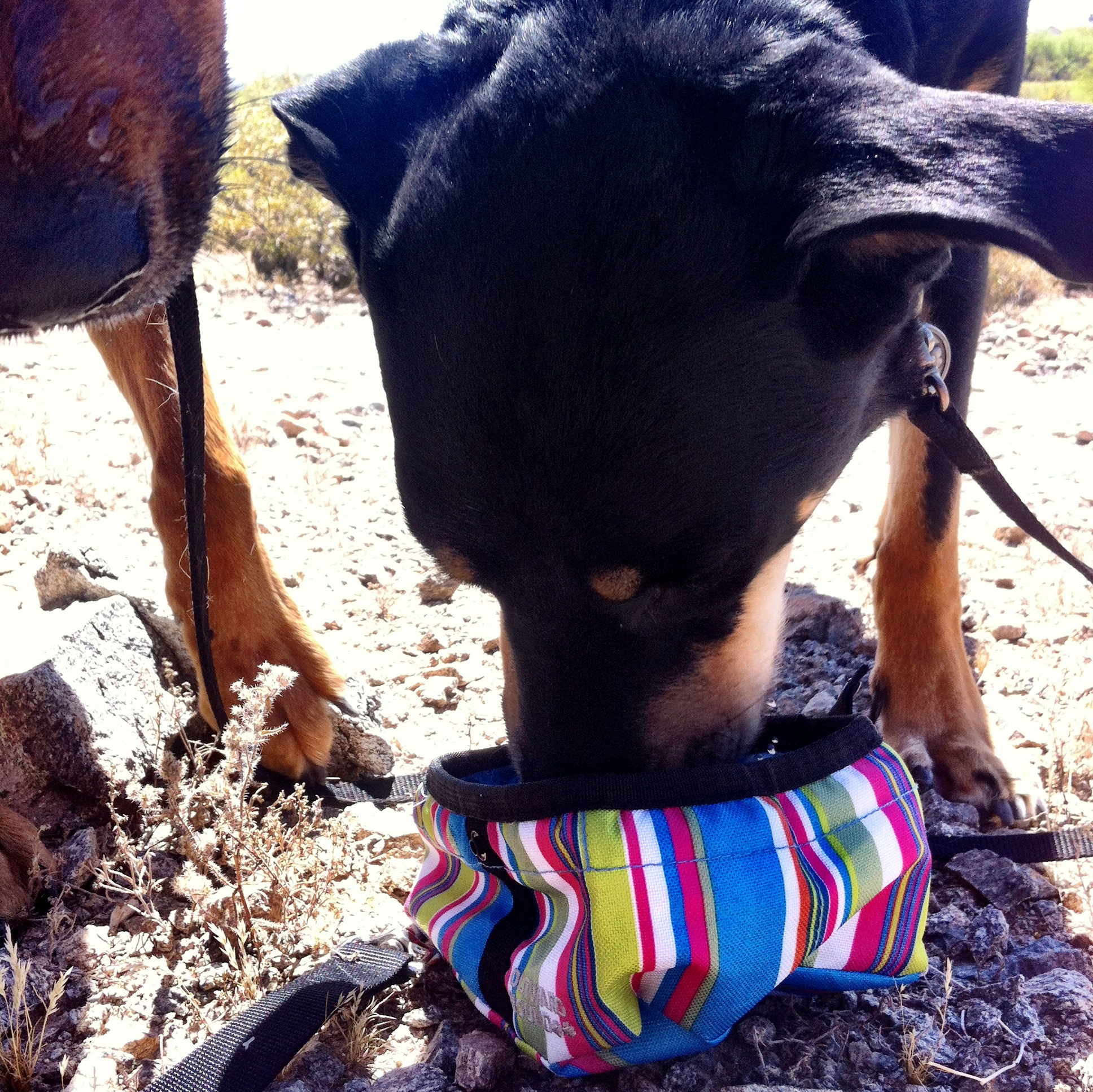The littles and I were eagerly anticipating our recent visit to The Children's Museum of Phoenix because May is Companion Animal Month (sponsored by Banfield Pet Hospital) at the museum. Since we're all animal lovers and we love the museum, it couldn't get much better! Of course, we first had to dive into...er...climb into the Schuff-Perini Climber, quite possibly the coolest climbing apparatus ever created. The littles spent about 30 minutes exploring and trying to lose and find each other. I went up, too. Unlike the bacteria-laden hamster maze passed off as a play place by the dining establishment with the golden arches, this climber is clean and most spaces are large enough for adults, who are encouraged to climb with their little ones.
The littles really enjoyed the pet-themed art projects in the art studio.
They started by creating "Pet Crayon Rubbings," which Porter really took to. The museum provided all necessary supplies and instructions. It was pretty amazing how many different animals could be made with the simple rubbing outline.
Next, they moved on to make "Pet Stick Puppets," which was a lot of fun. They traced from templates, added details with markers and cut paper, and then glued their creature onto craft sticks. They did a show in the puppet theater with their finished products right there in the art studio.
We came away with some really special handmade treasures.
We set off to explore the museum some more, and in addition to the amazing regular exhibits, we discovered that the hallway leading to the reading nook was full of whimsical animal art by Carolyn Schmitz.
The paintings were hung low enough for the children to view comfortably, and my littles had a ball just spotting the different animals and intricate details in each painting. The juxtaposition of classic realism with a child-like subject matter would please art-goers of any age.
The highlight of our visit to the Children's Museum of Phoenix's Companion Animal Month was the "Ask the Vet" session. Banfield Veterinarian and Chief of Staff at the Tempe Marketplace office, Dr. Ryan Pearce, was on hand to chat with children and answer questions about pets and veterinary medicine.
Dr. Pearce was knowledgeable and great with kids. Not to mention, he brought tattoos and other giveaways so he was "in."
The kids asked about what kind of animals Banfield and Dr. Pearce take care of and learned that they see mostly cats and dogs, but also snakes, lizards, mice, birds, rabbits, hamsters, and other companion animals.
Porter asked, "How does it make you feel when you save an animal's life?"
Dr. Pearce got a big smile on his face and said, "it's really rewarding because we get to see the pets happy and healthy, and especially make the pet's parents happy because they are usually really worried and scared when something happens to their pet. It makes me feel really good to help someone, you know? You should take every opportunity to help someone when you can. It makes you feel really good–sometimes better than the person you helped."
What a great message.
Dr. Pearce and the staff at the Children's Museum of Phoenix also told us about their "Future Vet Camp" program held once every three months for one day. The program, geared for children of elementary school age is a "career discovery program that teaches children about veterinary medicine." Future vets get to interact and learn about procedures from a veterinarian and a therapy dog, and they even earn a stethoscope upon "graduation." I think I know two future vets.
In June, SRP is sponsoring "Safety Month," and the museum has some really fun activities planned, including programming on bike safety and safety around water and electricity.
The museum is celebrating its 5th Birthday with a "Big Birthday Bash" on Friday, June 14th. Marion Wiener, Director of Marketing & Communications, informed me that "general admission gets you all that you love about the more than 300 hands-on, learning experiences at the museum, plus face painting, magic, balloons, birthday crafts, cupcakes, giveaways, and more!"
Our Companion Animal Month experience at the Children's Museum of Phoenix was educational and lots of fun, and I didn't even touch on the regular exhibits, which make up the majority of the museum. It's a place worth coming back to again and again to discover new things, and even the old things become new experiences as the children grow and rediscover.
Disclaimer: I was provided admission to the museum in exchange for my honest opinion.

